Double Widowhood Part 4
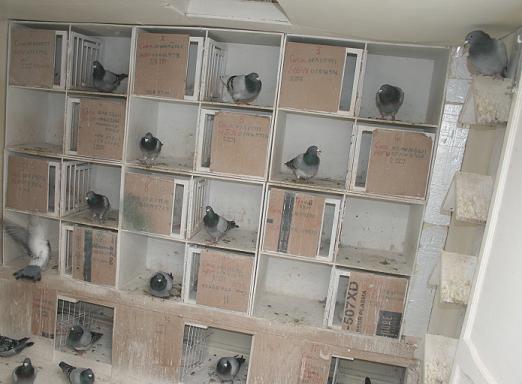 As stated before, my first priority is to separate the hens as quickly as possible and wean the youngsters to their own compartment. Once this is achieved then I can start to cut back on the quantity of feed given and the type of grain that I feed. For those unweaned young birds they will still receive legumes ( peas) in their boxes in cups. In this way, I can control the feed given to the other widowers which do not have any youngsters. Good quality malting barley is a favourite way to get the droppings looking just right ( small round marbles) and to start the process of taking off any unwanted weight from the team. Also you will notice that as you concentrate on the carbohydrates and steer away from the proteins that the flesh will pinken a little faster. In the last four decades that I have been in this sport let me say that there is not any magic ELIXIR on the market that will place pink flesh on the breast of your pigeons. Other than physically painting it on them, the only method that I know of is to reduce the number of inmates (thereby increasing the oxygen for each bird), reduce the protein content ( cut down on the peas and increase the carbohydrates), increase the wing time ( make sure that they are properly trained prior to the race they are undertaking), eliminate respiratory problems immediately ( medicating when necessary especially for trichomoniasis), provide plenty of motivation and last but not least let the widowers have complete rest during the day. Since the birds will be fed twice daily, they will receive only barley ( top grade malting barley) in the morning. In the evening I will give them a carefully monitored amount of barley ( 20-30% ) and a mixture ( 70-80%). My racing mixture will change throughout the racing season depending on availability and the quality of good grains. At the beginning of the racing year my mixture will contain; 40% corn ( of which 30% will be of the red/yellow seed quality corn variety and 10% yellow/white kaffir (milo) not the reddish kaffir which contains tannic acid), 30% peas/ lentils ( consisting of a variety of brown maples, yellow peas, trapper/century peas, vetch or tares, French or Eston lentils etc.try for a variety ) 20% wheat ( hard western , Goose etc.) 5 % safflower and 5% brown rice. Once we start racing I drastically reduce the protein content to a point where they will not receive any legumes ( peas, lentils etc.) at all. Of course, as the distance races increase so must the carbohydrates and fats up until they make up the entire meal.
As stated before, my first priority is to separate the hens as quickly as possible and wean the youngsters to their own compartment. Once this is achieved then I can start to cut back on the quantity of feed given and the type of grain that I feed. For those unweaned young birds they will still receive legumes ( peas) in their boxes in cups. In this way, I can control the feed given to the other widowers which do not have any youngsters. Good quality malting barley is a favourite way to get the droppings looking just right ( small round marbles) and to start the process of taking off any unwanted weight from the team. Also you will notice that as you concentrate on the carbohydrates and steer away from the proteins that the flesh will pinken a little faster. In the last four decades that I have been in this sport let me say that there is not any magic ELIXIR on the market that will place pink flesh on the breast of your pigeons. Other than physically painting it on them, the only method that I know of is to reduce the number of inmates (thereby increasing the oxygen for each bird), reduce the protein content ( cut down on the peas and increase the carbohydrates), increase the wing time ( make sure that they are properly trained prior to the race they are undertaking), eliminate respiratory problems immediately ( medicating when necessary especially for trichomoniasis), provide plenty of motivation and last but not least let the widowers have complete rest during the day. Since the birds will be fed twice daily, they will receive only barley ( top grade malting barley) in the morning. In the evening I will give them a carefully monitored amount of barley ( 20-30% ) and a mixture ( 70-80%). My racing mixture will change throughout the racing season depending on availability and the quality of good grains. At the beginning of the racing year my mixture will contain; 40% corn ( of which 30% will be of the red/yellow seed quality corn variety and 10% yellow/white kaffir (milo) not the reddish kaffir which contains tannic acid), 30% peas/ lentils ( consisting of a variety of brown maples, yellow peas, trapper/century peas, vetch or tares, French or Eston lentils etc.try for a variety ) 20% wheat ( hard western , Goose etc.) 5 % safflower and 5% brown rice. Once we start racing I drastically reduce the protein content to a point where they will not receive any legumes ( peas, lentils etc.) at all. Of course, as the distance races increase so must the carbohydrates and fats up until they make up the entire meal.
At this time, I will begin to choose those candidates that I will exclude from certain meals. These are the birds from certain lines that inevitably put on too much weight. I have a line of Janssen pigeons that tend to become overweight very quickly. Just last winter, I finished reading P. DeWeerdt’s latest book and I found it interesting that he feels that one of the most redeeming qualities of the Janssen line of pigeons is their ability to put on weight even when given very little food. For me, I see this as more of a detriment than anything else. I have a few birds which require that their rations be strictly defined in order for them to reach optimum race conditioning. Here I am referring to that buoyancy almost weightlessness that widowers who are in top form seem to achieve. Once you have handled a group of widowers who are in top form you will get an understanding of this weightless feeling. Just recently this point of buoyancy was reaffirmed to me. Due to steady rain for three days my widowers were neither trained nor exercised. As I was placing them in the basket for a toss I noticed how heavy feeling they had become in the span of three days. They certainly did not have that weightless feeling to them. When widowers are in form you can release them from your hands in the loft and they will almost float and clap their wings to their box. They don’t have that huge encumberance called extra weight holding them back. During this three days of inactivity I had been feeding them the same as if they were active instead of changing their diet to suit the workload. I feel that this is extremely important. Remember, most of what happens during the year, both the successes and the failures can always be traced back to the manager, coach, or trainer( namely you).
After a week of controlled feeding the widowers should be flying well either in the morning or evening( depending on whether you train your pigeons in the morning or the afternoon ). Please keep in mind that once the first race is over training becomes optional. From years of experimenting, I have found that my results are not enhanced by road training after the first race. However, having said that, I know of many top widowhood fliers that train throughout the entire race programme with tremendous success. The key here is to decide what fits your particular situation taking into consideration time allotment, family and business commitments. The widowhood cocks and hens that do not go to the race will receive an 80-100 mile ( 130-200 km) race or toss each week-end. In our area we are extremely fortunate to have a gentleman that transports our birds for a sprint race each weekend. This is ideal, as it gives the birds about a two hour fly and eliminates the need for taking them out on Sunday, thus leaving this as a day of rest for you, your birds and most importantly your family.
Depending on the duration of the race I will either bath the birds on race day which is Saturday or I will wait until the next day. If the race has been very easy and all the birds are back before noon I will place a very warm bath out for both sexes in their own separate compartments. However, if the weather is cold or damp I will wait for Sunday. I have in the past given them a forced bath , but only if the race was extremely hard on them. Usually they will take a warm bath very quickly. On return from the race they generally only receive a mixture of small seeds for the first few hours. The small seeds are a mixture of rape, millet, niger etc. Later in the day, they will be given malting barley, rice, safflower, white kaffir and wheat. I like to keep them a little on the hungry side for the first day or two. It is also very important to replenish salts and minerals which have been lost due to the race. I try to accomplish this in two different ways. First, I will prepare a concoction of water, honey, lemon,pinch of salt and a little gatorade. This is out for them when they first return. After they have been home for a few hours they will receive plain cold water in the drinking fountain. The second way that I try to replenish their lost salts and minerals is by placing fresh pick stone, vitaminerals, granite and oyster shell out for them. Generally, if it has been a challenging race they will definitely partake of the pick stone because of the 25% salt content.
- Double Widowhood Part 1
- Double Widowhood Part 2
- Double Widowhood Part 3
- Double Widowhood Part 4 <= You Are Here
Double Widowhood Part 4 by John Marles
The Leading Online Pigeon Racing and Racing Pigeons Magazine – The Pigeon Insider

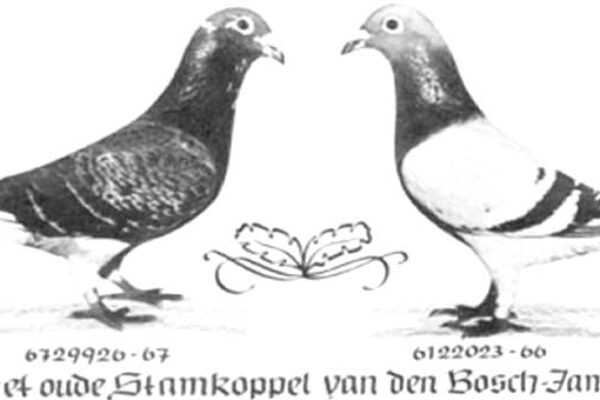
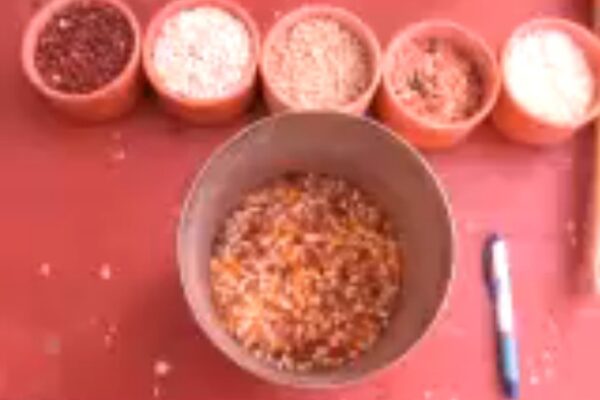
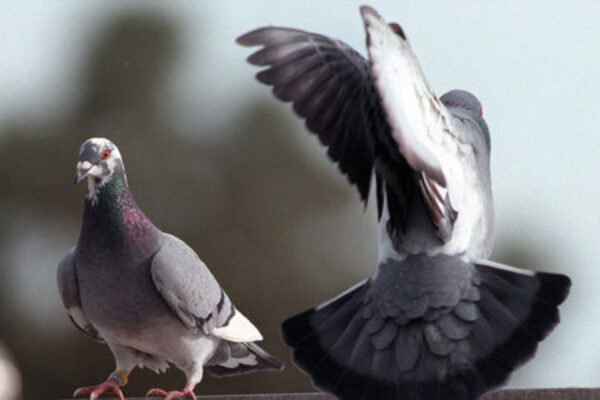

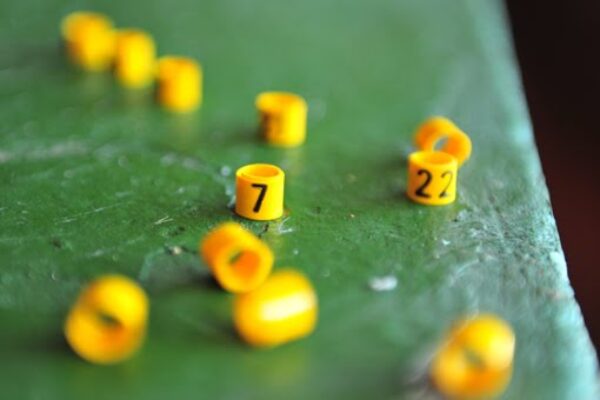
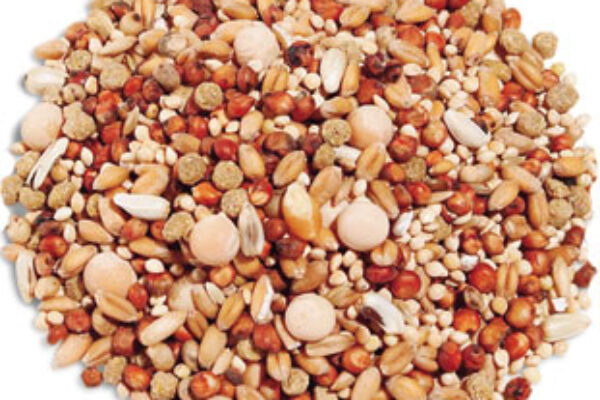


great article as usual some really good tips
These are the great secrets of Pigeon Racing. It matches up with what the top winners in our sport are doing to be Champions. The reward of having some success can change a fanciers life. Bring value to your loft and yourself. This site has provide so much helpful information outstanding job. BLESS!
Hi Chris very good article i wish i had the room i have no more room to build oh i could then
i would have problems houses are to close Brad.
Hi, Chris
What can i say, read the comments and!!!!! just wonder why most fanciers dont find the golden thread, 100 racers race from the perch ,25(full limet) every week winner on points at the end of the season. orrrr 12 widowhood cocks in their nest boxes and 3 every week in race and the most 1 , 2, 3, positions at the end of the season (price money trophies ) who and the cost ok let me stop …….
Chris I’m sorry to say I am not interested in the darkning system and neither in the widowhood system. I hate both. I see it also as animal cruelty. This is also my very last comment on these two subjects of darkning and widowhood systems.